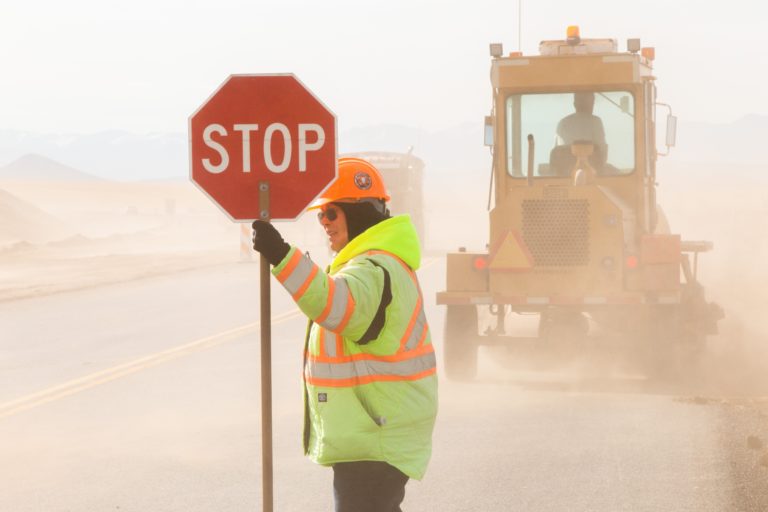Safety Tips – November 17, 2023
4 Strategies to Keep Workers Energized Is fatigue compromising your jobsite safety? Lack of sleep can compromise…
4 Strategies to Keep Workers Energized
Is fatigue compromising your jobsite safety? Lack of sleep can compromise workers’ ability to think clearly, make informed decisions, mitigate risks and be productive. On a construction site, the results can be deadly.
Research indicates that a person who loses two hours of sleep from a normal eight-hour sleep schedule may be as impaired as someone who has consumed up to three beers.
According to the survey report, jobs that require sustained attention or are physically demanding — in other words, most construction jobs — significantly increase the risk of fatigue. Other risk factors for worker fatigue include conditions typical of many construction projects, such as:
- Working at night or in the early morning
- Working long shifts without regular breaks
- Working more than 50 hours each week
You can’t force employees to get more sleep, but you can take steps to help reduce worker fatigue and keep tired workers from hurting themselves or others.
Enforce Breaks And Limit Overtime
Make sure workers are taking scheduled breaks, especially when it’s hot outside. And consider creating a written policy that limits overtime.
The policy should outline procedures for reporting fatigue risks and encourage workers to speak up without fear of negative consequences. It should also include strategies for managing fatigued workers and educating workers on how to get better sleep at home.
If your employees are working excessive overtime or frequently swapping hours, it may mean you need to adjust your staffing levels. Encouraging overtime might seem more cost-effective, but over the long term you risk the significant costs of an accident, which could include OSHA fines and increased workers’ compensation rates, not to mention a reputation that could damage industry relationships.
Add Stretching Breaks
Most construction work is physical, so it may seem counterintuitive to add more movement into the work day. But the labor on a typical jobsite includes repetitive physical tasks, highly intensive tasks done in brief intervals, work done in extreme temperatures or the use of equipment with heavy vibrations. Research suggests all of these can contribute to worker fatigue, not to mention a host of physical problems. Stopping to stretch can help.
Stretching and low-intensity exercise can reduce fatigue and boost energy, and more general contractors are taking this fact to heart. Skanska USA found that its group “Stretch & Flex” sessions helped workers shake off sleep and corresponded with a significant drop in back injuries and soft tissue injuries such as muscle tears.
Stretching is a great way to start the day, but a stretch break after lunch (construction fatalities peak at noon, according to a study) or toward the end of shifts can help reenergize fatigued workers.
Consider Wearables To Watch For Worker Fatigue
Wearable technology that monitors worker fatigue can offer an extra layer of protection.
Fatigue Science’s Readiband, for example, captures and analyzes sleep data to predict when worker fatigue will hit. The app helps workers — and managers — identify specific hours when a break may be needed or, in extreme cases, a shift should be reassigned. The app also shows workers how their sleep patterns affect their fatigue over time, which can motivate them to make positive lifestyle changes.
Get Your Workers Onboard
All of these safeguards demand some level of buy-in from workers. Let your employees know you take worker fatigue seriously, and they’ll take it seriously, too.
If you educate workers about the effects of fatigue and strategies they can use to get the shuteye they need, you’ll sleep better at night knowing you’ve created a safer jobsite.
4 Estrategias Para Mantener A Los Trabajadores Con Energia
¿La fatiga compromete la seguridad en su lugar de trabajo? La falta de sueño puede comprometer la capacidad de los trabajadores para pensar con claridad, tomar decisiones informadas, mitigar riesgos y ser productivos. En una obra de construcción, los resultados pueden ser mortales.
Las investigaciones indican que una persona que pierde dos horas de sueño de un horario normal de sueño de ocho horas puede estar tan deteriorada como alguien que ha consumido hasta tres cervezas.
Según el informe de la encuesta, los trabajos que requieren atención sostenida o son físicamente exigentes, en otras palabras, la mayoría de los trabajos de construcción, aumentan significativamente el riesgo de fatiga. Otros factores de riesgo para la fatiga de los trabajadores incluyen condiciones típicas de muchos proyectos de construcción, tales como:
- Trabajar de noche o temprano en la mañana
- Trabajar turnos largos sin descansos regulares
- Trabajar más de 50 horas a la semana
No puede obligar a los empleados a dormir más, pero puede tomar medidas para ayudar a reducir la fatiga de los trabajadores y evitar que los trabajadores cansados se lastimen a sí mismos o a otros.
Hacer cumplir los descansos y limitar las horas extras
Asegúrese de que los trabajadores tomen descansos programados, especialmente cuando hace calor afuera. Y considere la posibilidad de crear una política escrita que limite las horas extras.
La política debe describir los procedimientos para informar sobre los riesgos de fatiga y alentar a los trabajadores a hablar sin temor a las consecuencias negativas. También debe incluir estrategias para manejar a los trabajadores fatigados y educar a los trabajadores sobre cómo dormir mejor en casa.
Si sus empleados trabajan horas extras excesivas o intercambian horas con frecuencia, puede significar que necesita ajustar sus niveles de personal. Fomentar las horas extras puede parecer más rentable, pero a largo plazo se arriesga a los costos significativos de un accidente, que podrían incluir multas de OSHA y mayores tasas de compensación para trabajadores, sin mencionar una reputación que podría dañar las relaciones de la industria.
Agregar descansos de estiramiento
La mayor parte del trabajo de construcción es físico, por lo que puede parecer contradictorio agregar más movimiento a la jornada laboral. Pero el trabajo en un lugar de trabajo típico incluye tareas físicas repetitivas, tareas altamente intensivas realizadas en intervalos breves, trabajo realizado en condiciones extremas. temperaturas o el uso de equipos con pesado
Vibraciones. Las investigaciones sugieren que todo esto puede contribuir a la fatiga de los trabajadores, sin mencionar una serie de problemas físicos. Detenerse para estirarse puede ayudar.
El estiramiento y el ejercicio de baja intensidad pueden reducir la fatiga y aumentar la energía, y cada vez más contratistas generales se están tomando muy en serio este hecho. Skanska USA descubrió que sus sesiones grupales de “estiramiento y flexión” ayudaron a los trabajadores a quitarse el sueño y se correspondieron con una disminución significativa de las lesiones de espalda y lesiones de tejidos blandos, como desgarros musculares.
Estirarse es una excelente manera de comenzar el día, pero una pausa para estirarse después del almuerzo (las muertes en la construcción alcanzan su punto máximo al mediodía, según un estudio) o hacia el final de los turnos puede ayudar a revitalizar a los trabajadores fatigados.
Considere los dispositivos portátiles para estar atento a la fatiga de los trabajadores
La tecnología portátil que monitorea la fatiga de los trabajadores puede ofrecer una capa adicional de protección.
Readiband, de Fatigue Science, por ejemplo, captura y analiza los datos del sueño para predecir cuándo llegará la fatiga de los trabajadores. La aplicación ayuda a los trabajadores, y a los gerentes, a identificar horas específicas en las que puede ser necesario un descanso o, en casos extremos, se debe reasignar un turno. La aplicación también muestra a los trabajadores cómo sus patrones de sueño afectan su fatiga a lo largo del tiempo, lo que puede motivarlos a realizar cambios positivos en su estilo de vida.
Incorpore a sus trabajadores
Todas estas salvaguardas exigen cierto nivel de aceptación por parte de los trabajadores. Hazles saber a tus empleados que te tomas en serio la fatiga de los trabajadores, y ellos también se lo tomarán en serio.
Si educa a los trabajadores sobre los efectos de la fatiga y las estrategias que pueden usar para dormir lo que necesitan, dormirá mejor por la noche sabiendo que ha creado un lugar de trabajo más seguro.






